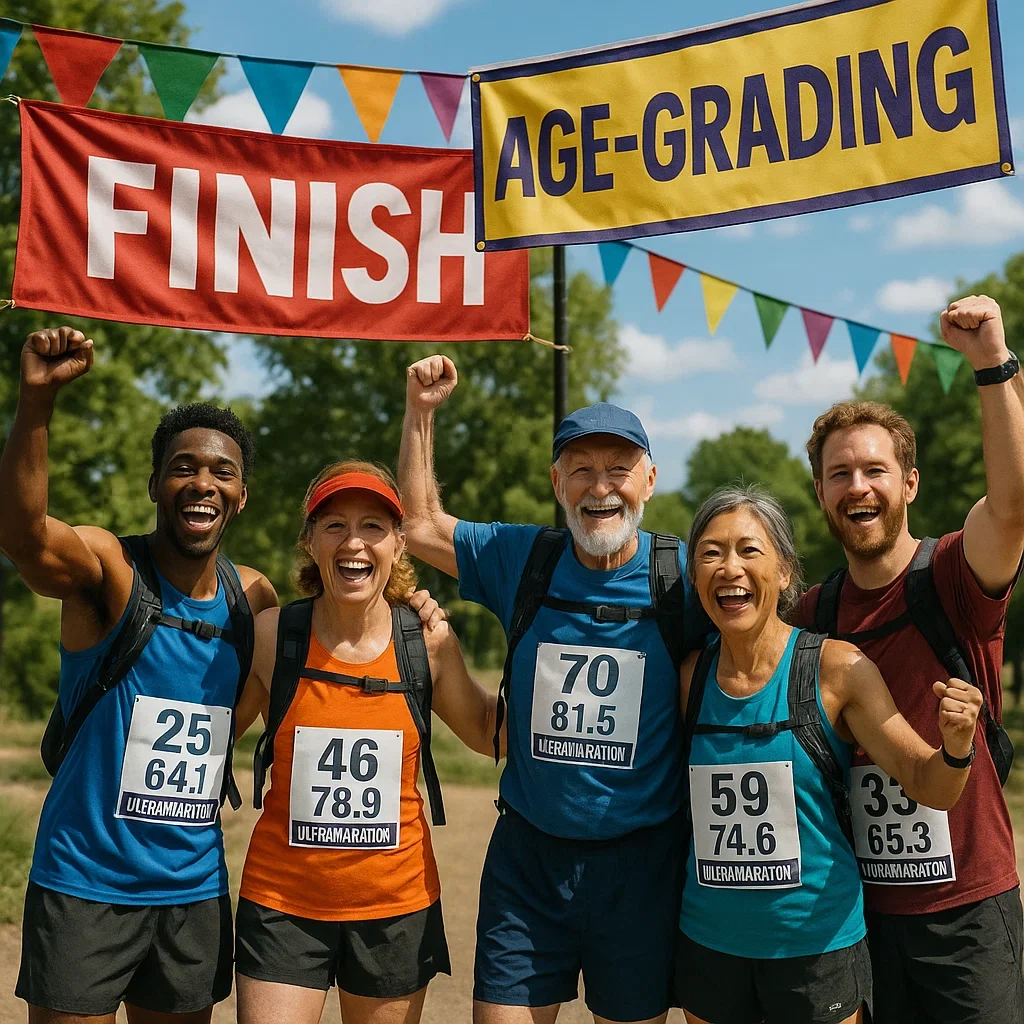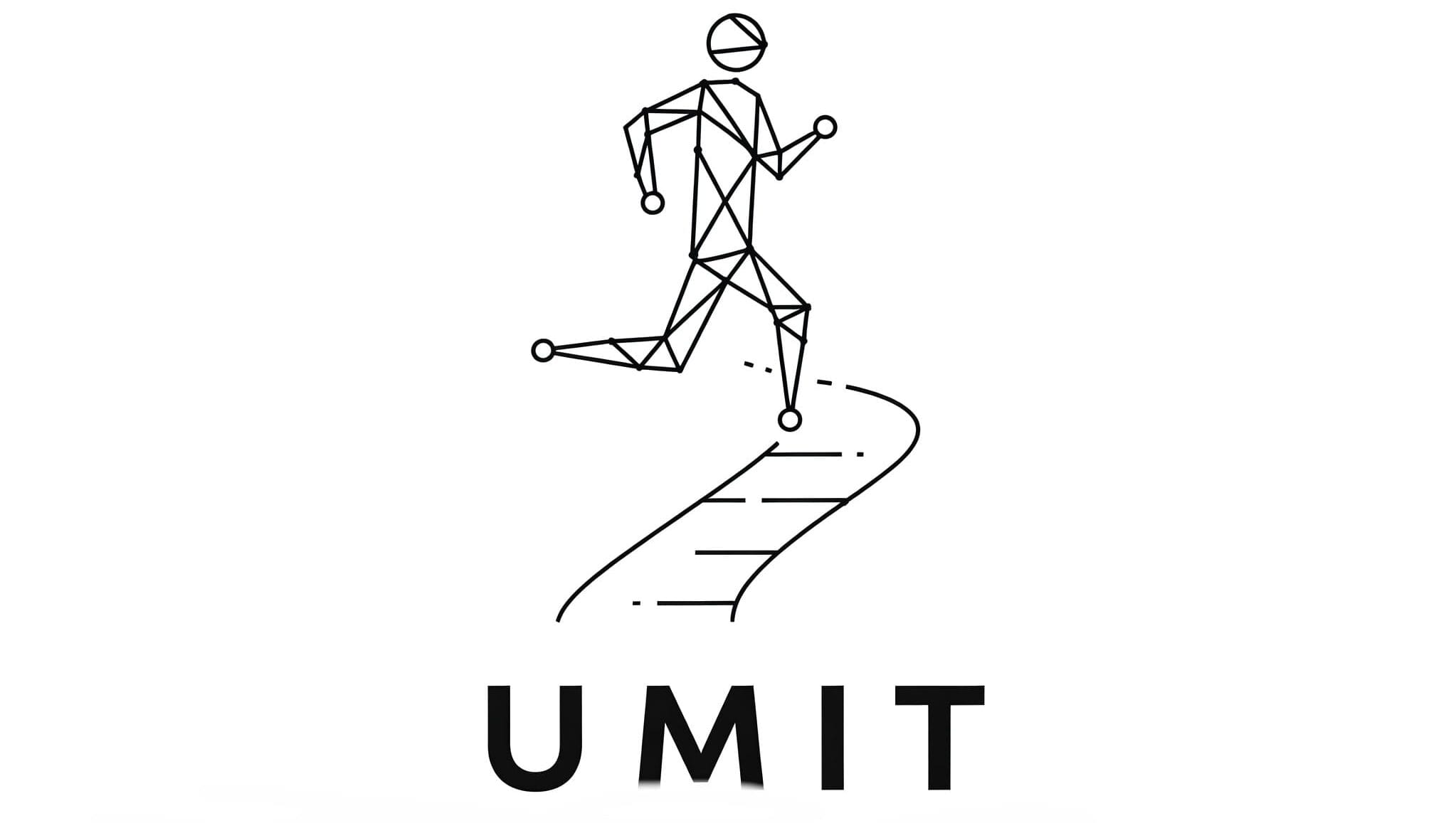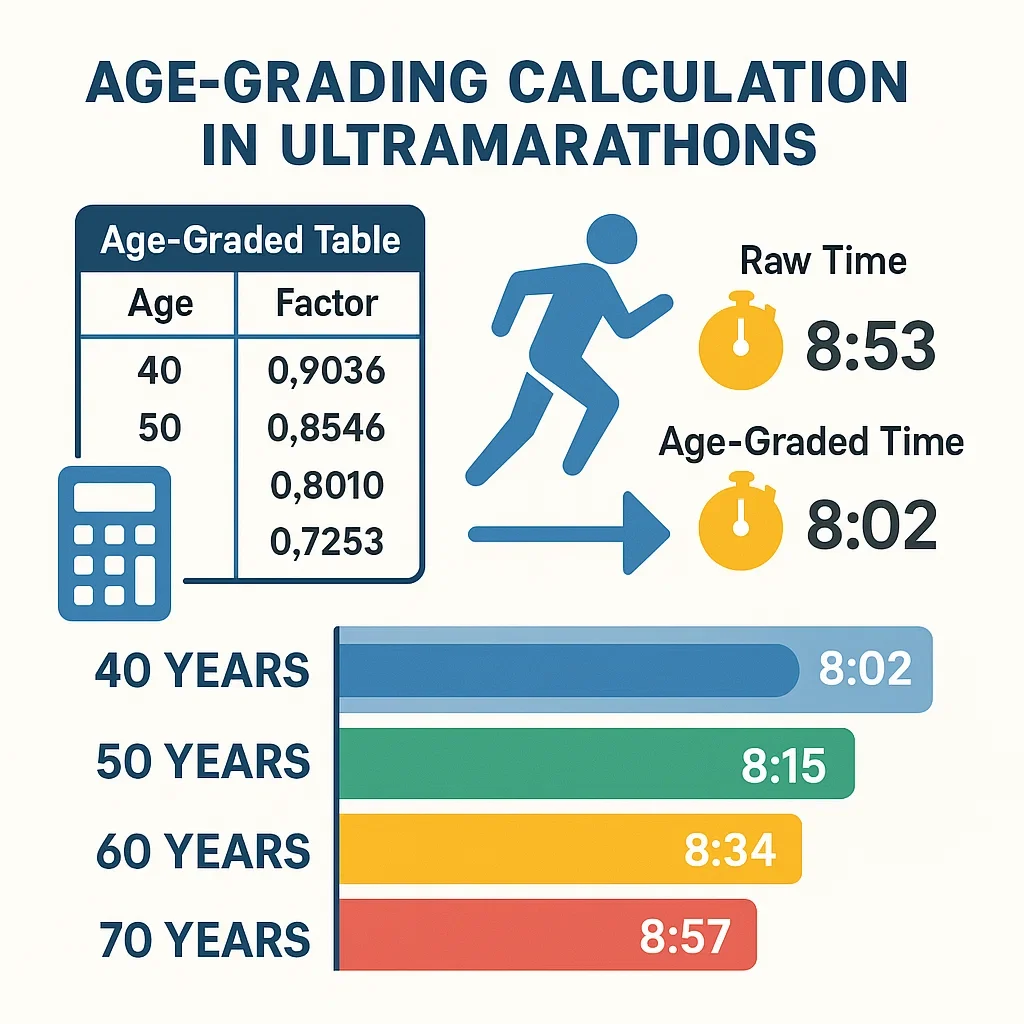What if you could measure your ultramarathon performance not just against the clock, but against your true potential—at any age? Age-grading is the science-based secret that lets runners in their 40s, 50s, 60s, and beyond turn “getting older” into a new race against themselves. And the finish line is always moving forward.
The ultra scene is no longer the exclusive playground of the under-40 crowd. In fact, some of the sport’s most inspiring stories come from runners who discovered their endurance superpowers later in life. But here’s the reality: As we age, our bodies change—VO₂-max drops, muscles recover more slowly, and raw speed naturally fades. Still, does this mean your best days are behind you? Absolutely not! Age-grading flips the script.
Why Does Age-Grading Matter for Masters Runners?
- 🏆 Redefines Success: Instead of chasing lifetime PRs you might never touch again, you get to pursue age-graded personal bests. A 55-year-old finishing a 100K in 13 hours might actually score higher than their own 10-hour finish at age 40!
- 📈 Makes Progress Visible: It’s easy to get discouraged when times slow down with age. Age-grading shows you where you’re still improving, even if your raw pace drops.
- 🎉 Keeps You Motivated: New goals open up at every decade. You can set age-group records, compete for age-graded awards, or just prove to yourself that you’re still in the game—maybe better than ever!
- 🤝 Levels the Playing Field: No more comparing yourself to 25-year-olds. Whether you’re 38 or 68, your effort is fairly measured against others in your cohort—and against the world’s best for your age and gender.
Masters ultrarunning is about longevity, consistency, and enjoying the process—not just chasing the clock. Age-grading gives you the tools to celebrate every season of your journey, learn from your data, and find new reasons to lace up. The finish line keeps moving, but so do you!
In the next sections, we’ll break down exactly how age-grading is calculated, show step-by-step examples, and share strategies for using your new age-graded numbers to set smarter goals, avoid burnout, and enjoy every ultra finish for life.
How Does Age-Grading Work? Calculation Methods Explained
Age-grading isn’t magic—it’s math! The method compares your race time to the best possible performance for your age and gender, based on global data. This process “levels the playing field” and shows how close you are to peak potential—right now, not decades ago.
Step 1: The Age-Standard Table
World Masters Athletics (WMA) compiles tables showing the fastest recorded times for every age (usually up to 100+!), for each race distance. These times are updated every few years and are used by calculators and races worldwide.
Step 2: Plug In Your Result
Take your finish time and the age-standard for your age/gender.
Formula:
Age-Graded % = (Age-Standard ÷ Your Time) × 100
Lisa, age 55, runs a 50K in 6:00:00.
Female 55 age-standard: 4:45:00
(Convert both times to minutes! 4:45 = 285 min, 6:00 = 360 min)
Age-Graded % = (285 / 360) × 100 ≈ 79%
79% is a high-level club performance for her age group!
Step 3: Interpret Your Score
- 60–69%: Strong club runner
- 70–79%: Competitive at state/regional level
- 80–89%: National class
- 90%+: World class!
Every age-graded percentage is a win. Many runners discover they are performing “better for their age” in their 50s and 60s than they did in their 30s!
Where to Calculate?
- RunBundle Age-Grading Calculator
- Masters Athletics Age-Grading Calculator
- Many race result pages (UltraSignup, major marathons) show age-grading automatically.
Why Is Age-Grading Especially Important in Ultras?
Ultramarathons are the ultimate test of endurance, grit, and adaptability. But as distances grow longer and race hours stretch into double digits, the effects of age on performance become more pronounced than in shorter races. Here’s why age-grading is a game-changer for anyone over 40 running ultras:
- ⏳ Ultra distances amplify age effects: VO₂-max and recovery decline are more noticeable after age 40, especially in events lasting 5+ hours. Without age-grading, older runners’ achievements can seem less impressive—when they’re actually more remarkable!
- 🏅 Fair recognition for every age group: Many ultramarathons now offer age-group and age-graded awards, ensuring hard-earned performances in your 50s, 60s, or 70s get the celebration they deserve. You’re not “just finishing”—you’re competing on your own terms.
- 🚀 Keeps lifelong motivation burning: As PRs get harder with age, age-grading offers new targets. You can improve your percentage from year to year, even as your absolute time slows—a huge mental boost for staying in the game.
- 👟 Encourages smarter training & pacing: Age-graded goals reward consistency, smart recovery, and long-term health over reckless mileage. This means fewer injuries, more finish lines, and a longer ultrarunning journey.
At the legendary Comrades Marathon, a 65-year-old who finishes in the top 25% of their age group can earn a higher age-graded score than a 28-year-old finishing top 10 overall. Age-grading highlights the value of persistence, not just youth or raw speed.
In the world of ultras, age-grading is more than a number—it’s a celebration of every decade you keep chasing finish lines.
From local trail races to world-famous 100-milers, your journey deserves to be measured fairly. Age-grading makes sure it is.
How Masters Runners Use Age-Grading for Strategy & Progress
Age-grading isn’t just for statistics geeks—it’s a real-world performance tool. Masters runners everywhere use age-grading to shape their goals, tweak their training, and measure their progress year after year. Here’s how you can make the most of your numbers:
- 🗓️ Track annual “age-graded PBs”: Keep a spreadsheet or notebook of your best age-graded score each year for every distance. You’ll often find new “bests” in your 50s or 60s—even as finish times slow.
- 🎯 Set smarter, sustainable goals: Instead of chasing an all-time PR from your 30s, aim to improve your age-graded % this season. You might never hit your fastest-ever time again—but you can still become a stronger, smarter runner.
- 🔄 Benchmark progress across years: A 72% age-graded run at age 58 could be a bigger achievement than a 68% at age 41! Use your percentage to spot real, meaningful improvement.
- 🏅 Target age-graded awards: Many races now recognize top age-graded performances. This can open up new podium opportunities and keep your competitive fire burning!
- 👟 Train with context—not ego: If your age-graded % is holding steady or rising, you know your training is working—even if your race times creep up. This keeps motivation high and reduces frustration.
- 🤝 Connect with other masters: Age-grading gives you a universal “language” to compare results, swap advice, and cheer for friends at every age.
“Let your age-graded % be your true north. Some years, just maintaining your score is a victory. Celebrate those quiet wins—they’re the secret to running happy for life.”
Remember: Age-grading is a powerful reminder that every season brings its own kind of peak. You’re not just running against a clock—you’re running toward your next best self.

Real-World Age-Grading Examples: Masters Achievements at Every Age
Want proof that age-grading makes a difference? Check out these real-world examples and see how age-graded scores turn every finish into a personal victory—no matter your decade.
“Notice how runners in their 50s and 60s can earn similar or even higher age-graded scores than younger athletes—sometimes with much slower finish times. This is what makes age-grading so powerful and motivating for lifelong ultra runners.”
Your Takeaway: Use your own results—whatever your age—to track personal bests, celebrate improvement, and stay inspired. Age-grading means your effort *always* counts.
❓ FAQ: Age-Grading in Ultramarathons
🟪 What is considered a “good” age-graded percentage for ultramarathons?
🟪 Can I use age-grading for trail ultras?
🟪 Are age-graded awards common at ultras?
🟪 How often should I calculate my age-graded score?
🟪 How do I find my age-standard for my age and distance?
🟪 Can age-grading be used for shorter or non-ultra races?
🟪 What factors can affect my age-graded percentage?
🟪 Is it better to focus on age-graded PRs instead of all-time PRs as I get older?
🟪 Are there any limitations or controversies with age-grading?
🟪 Where can I share my age-graded results or connect with other masters runners?
📚 Further Reading & Resources
- World Masters Athletics (Official Age-Grading Tables)
- Runner’s World: Age-Grading for Runners Explained
- UltraRunning Magazine: Age-Grading in UltraRunning
- RunBundle Age-Grading Calculator
- Masters Athletics Age-Grading Calculator
Want to go deeper? Try exploring the latest masters age-grading charts, join a local or online running group, or check out personal stories from top age-graded finishers for motivation!
🌟 Final Thoughts: Celebrate Your Progress—Every Year, Every Finish Line!
Age-grading isn’t just a number on a results sheet—it’s a new lens for lifelong achievement and joyful running. Whether you’re celebrating an age-graded PR at 46, 59, or 71, you’re part of a growing movement of runners redefining what’s possible at every stage of life. Chase your best score, stay curious, and never let your “age” limit your next goal.
🔗 Share This Article
Help other runners discover the power of age-grading! Share with your crew or club.
💬 Join the Conversation!
How has age-grading changed your outlook or goals in ultramarathons? What was your most satisfying age-graded result? Share your story or tips in the comments below—or join our community page for more inspiration!
🚀 Lost Pace Motivation
Remember: The journey never ends. Every age, every season, every finish is a new starting line. Keep running smart, keep learning, and celebrate every milestone—because your best is always ahead.

About the Author
Lost Pace is an ultramarathon runner, shoe-tester and the founder of umit.net. Based year-round in Türkiye’s rugged Kaçkar Mountains, he has logged 10,000 + km of technical trail running and completed multiple 50 K–100 K ultras.
Blending mountain grit with data, Lost analyses power (CP 300 W), HRV and nutrition to craft evidence-backed training plans. He has co-written 260 + long-form guides on footwear science, recovery and endurance nutrition, and is a regular beta-tester of AI-driven coaching tools.
When he isn’t chasing PRs or testing midsoles, you’ll find him sharing peer-reviewed research in plain English to help runners train smarter, stay healthier and finish stronger.
Ultrarunner · Data geek · Vegan athlete

